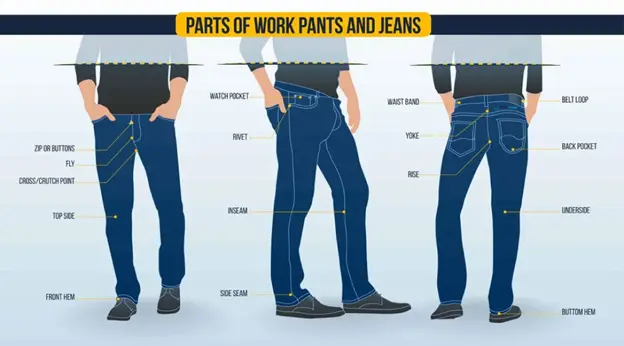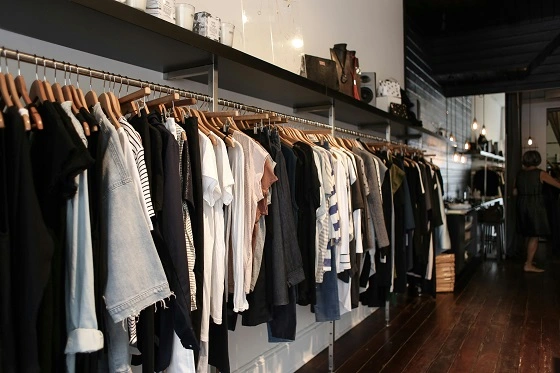Cutting Process Procedure & Flow chart of Apparel Industry
Cutting room is a section in the garments industry where fabrics are cut as per the pattern, marker, and cut into parts sewn to bring in garments form. Cutting is the most sensitive operation in the apparel industry; the cutter man work accuracy is the key here to maintain good cutting quality. If you are related to the apparel industry or apparel manufacturing process, you should know cutting work activities. Certain rules and procedures have to be maintained by the cutting department. Here we present the Cutting Process Procedure and the Flow Chart of the Apparel Industry.

Step-by-Step Cutting Process Procedure in the Apparel Industry:
When fabric spreading is completed then the fabric cutting is started. Cutting out pattern pieces of apparel components as per the required measurement of the patterns from a fabric lay is termed as fabric cutting. It should be noted here that the term fabric cutting is only applicable for clothing manufacturing technology. In other words, cutting is the method by which the finished fabric is cut as per the pattern shapes for the particular style of apparel. Before cutting the fabric, the marker planning for the particular apparel style should be confirmed.
Marker planning is an activity of placing all types of patterns of all sizes on the fabric lay area in a trial and error method till we finally achieve the best marker efficiency. This can also be done virtually in the computer software. After marker planning, the fabric is spread on the cutting table as per the required number of layers then the pattern shapes are marked on the fabric surface as per the marker planning finalized before. The pattern marking can be done directly on the fabric or in the marker paper which is printed in the computer aided design (CAD) printer and then the paper is kept on the fabric surface or no need mark on the fabric, the computer software itself will cut the fabric as per the marker planning stored in the computer.
After marking, the fabric will be cut and stickers will be struck for the identification purposes of sizes. After completing this process, the cutting parts are tied into the bundles. The bundles will be tied with the tags for identification purposes. After the cutting process procedure details, follow the Flow chart of the cutting section given below:
Flow chart of the Cutting Process in the Garments Industry:
Cutting Process procedure: the Working Flow chart
Cutting plan based on the shade band record
↓
Receive the PO sheet, Tech pack, and other details
↓
Fabric received from the Fabric Warehouse as per requisition
↓
Relax the fabric if necessary with a record
↓
Make a Marker to Determine consumption
↓
Marker and pattern Cross Check (ratio, grainline, jumping, etc.)
↓
Laying as per the marker length (Spreading)
↓
Spreading quality control
↓
Random quality check on fabric fault & others
↓
A cutting (if necessary hand scissoring done during check fabric) and band Knife cutting (small panel such as single fly etc.)
↓
Cutting Quality control
↓
Randomly Panel check with hard pattern
↓
Panel check with CAD marker paper
↓
Layer numbering &bundling
↓
100% panel check
↓
Replace defective parts shade-wise
↓
Ready to cut parts to input.
↓
Supply to Fusing & Sewing as per approved requisition & ratio
Flow Chart of Garments Cutting Section:
The flow chart of the Cutting Process Procedure is described briefly in the following:
Fabrics Relaxation
Spandex fabrics can be relaxed from 24 to 48 hours before spreading as per customer requirements. Cotton fabric relaxation will depend on customer requirements.
Pre-Spreading and Spreading Quality control
- Pattern and marker checking using the approved sample
- Follow Pattern grainline
- Spreading table marking lengthwise with allowance
- Shade-wise spreading by using a fabric’s shade chart
- Spreading defects like leaning, bowing, skew, narrow goods, tension, and marking visual defects.
Cut Panel Inspection
- A quality inspector will check the Panel using a Hard pattern after cutting from three different positions: Top, Middle, and Bottom
- If there is any discrepancy, a correction will be immediate. If the panel is found to be plus from hard patterns, it will have to cut extra parts. If the panel is found minus from the hard pattern, you will have to place the fabric under the marker as per the lay chart to remake again.
- All cut panels will be inspected to detect any types of fabric faults if any defective panel is found, it will be replaced from the lay chart-wise remnants by following the shade and pattern grain line.
Production Order Sheet:
Cutting Section firstly takes the PO sheet. They find out all detailed information in the PO sheet, especially size breakdown, size-wise, and color-wise order quantity. A bundle chart is issued to follow the bundle details of the cutting section.
- Pattern receives: They receive the approved pattern from the sample section.
- Marker Making: After receiving, they make markers according to the order sheet and pattern size.
- Fabric receives: Fabric is the main raw material in the cutting section. All success depends on cutting. So the cutting section has to become serious when they receive the fabric. Is the right fabric for the right marker or not?
- Fabric Spreading: Before spreading the fabric on a table, they relax the unrolled fabric for 12-24 hr. After completing the relaxation, they spread the fabric on a table with proper tension.
- Marker Placing: Marker is a thin paper that carries all the garment’s components and is placed on the fabric lay for cutting. Before cutting the marker from the CAD room was placed on the fabric layout. Marker checked very carefully before placement on fabric.
- Cutting: In this step, cutting is done by a cutter machine. Straight knife cutting machines and round knife cutting machines are mostly used for cutting.
- Sorting: After cutting, the cut parts are sorted according to shade, size.
- Numbering & checking: In this step, the cut parts are numbered and checked carefully so that the single components are never mistaken. QC checks the cut parts. If any defect is found, they replace the cut piece.
- Bundling: The cut pieces are bundled size by size and part by part.
- Input to Sewing: The bundled cut piece is ready for sewing and sent to the section.



